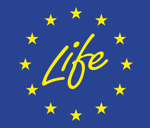
Wastewater, once treated and purified, could have a second life dedicated to facing water stress during periods of drought, especially in coastal areas and with seasonal increases in water consumption. The aim is to tackle the overexploitation of groundwater bodies.
Aquifers recharge with recovered wastewater can be done by two methods:
– Surface recharge through of basins.
– Direct injection into the aquifer.
Surface recharge is the oldest, most widely used, simplest and most economical method. Artificial recharge of aquifers can be direct -by injection wells- or indirect (surface or subsurface) – by infiltration through the land surface and diffusion into the soil – which provides additional treatment of the water before it reaches the aquifer.
What is needed for aquifer recharge?
Any aquifer recharge project using treated wastewater must include a plan to control the discharges that enter the sewage network, limiting the elements that are presumed to be harmful or potentially harmful. Special attention should be paid to toxic pollutants, as the recovery of an aquifer once it has been polluted is difficult and costly. There is still no legal regulation applicable to the quality of rechargeable water, but what is clear is that the water that will be consumed by humans must comply with the conditions of potability required by European directives.
Three factors can influence the quality of the processes:
– The change in the characteristics of the influent wastewater, due to different quantities in the inflows to the treatment plant, even though the plant design has correctly provided for variations in the incoming flow.
– Mechanical or operational failures. Variations in the quality of the treated wastewater can be taken as a possible indicator of the existence of deficiencies inherent in the plant, which would be classified in the previous point. Apart from the controls that can be implemented in each unitary process, it is very important a statistical control for each process that is required, observing the tendency of that process. This will allow us to predict its operation and which measures will be necessary to take, if it is required to include reserve treatment facilities, to duplicate processes of pollutants elimination, to homogenize flows, alternative evacuation systems, etc.
– It will be necessary to have a complete characterization of the aquifer and the quality of its waters. This is helpful to see which parameters we can increase with recharge or which we can vary.
All studies, projects, processes that lead to reducing groundwater pollution will facilitate the authorizations to recharge aquifers as established in Royal Decree 1620/2007, of December 7, which establishes the legal regime for the reuse of treated water.
In this way, through the use of treated wastewater, in other words, reclaimed water, it will be possible to avoid the overexploitation of aquifers and to supply the population when demand is high, as it would be done in a sustainable and controlled manner.